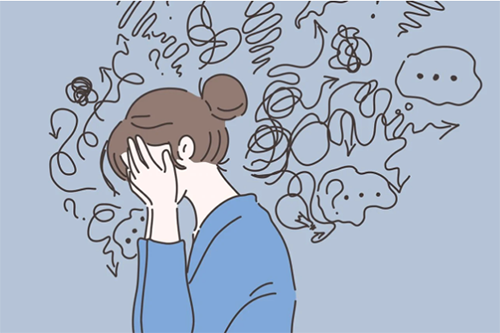
A common question to the Psychiatry Consultation Line is around treatment of Generalized Anxiety Disorder (GAD) in patients with a history of substance use disorders and for whom a Selective Serotonin Reuptake Inhibitor has not been effective. First-line treatments for Generalized Anxiety Disorder include Cognitive Behavioral Therapy (CBT), Serotonin Reuptake Inhibitors (SRI), or a combination of both. In cases where adjunctive CBT and multiple trials of SRIs have failed, buspirone can be given some consideration.
In 1980s-era, double-blind studies of GAD, buspirone’s efficacy was shown to be similar to benzodiazepines. An important difference between benzodiazepines and buspirone is that it takes buspirone longer to start working. Buspirone requires a multi-week or multi-month trial to assess efficacy. Compared to benzodiazepines, buspirone is less likely to cause sedation and, importantly, is not associated with the development of tolerance or dependence. Common side effects of buspirone include dizziness, nausea, and headache.
The FDA max dosing is 60mg/day and while some patients require a high dose, average therapeutic doses are in the range of 20 to 45 mg/day. Buspirone has a short half-life and some patients benefit from TID dosing.
Please refer to your own reference material for full prescribing information regarding medication dosing, risks, benefits, side effects, monitoring requirements, and drug interactions. We most often use Micromedex, UpToDate, or Epocrates. Additionally, there are free databases available to Washington State providers at https://heal-wa.org/professions/.
Author
Ryan Kimmel, MD
Professor, University of Washington School of Medicine, Department of Psychiatry and Behavioral Sciences
Chief of Psychiatry, University of Washington Medical Center
Medical Director, Psychiatric Consultation Line
Learn more
How do I address emerging anxiety during substance use recovery? (pdf)
UW Psychiatry and Addictions Case Conference series (UW PACC)*
Presenter: Mark Duncan, MD
The objectives of this presentation are to 1) discuss characteristics between a substance induced anxiety disorder and a primary anxiety disorder, and 2) to talk through different treatment options for anxiety symptoms.
CBT for Anxiety (CBT-A): What can I do with my patient instead of giving them a PRN benzodiazepine? (pdf)
UW Psychiatry and Addictions Case Conference series (UW PACC)*
Presenter: Patrick Raue, PhD
The objectives of this presentation are to 1) understand the CBT model of anxiety symptoms, 2) describe how to give the “treatment pitch” to patients, and discuss the difference between treatment with exposure vs. anxiety management strategies, 3) understand how to develop and work on an exposure hierarchy with patients and 4) describe anxiety management strategies that use physical and cognitive approaches.
Anxiety: fast facts and skills for the primary care physician (pdf)
UW Psychiatry and Addictions Case Conference series (UW PACC)*
Presenter: Ryan Kimmel, MD
A brief overview of diagnosing and treating anxiety in primary care.
*The UW Psychiatry and Addictions Case Conference series (UW PACC) is a free, weekly teleconference that connects community providers with UW Medicine psychiatrists and addictions experts. Sessions include both an educational presentation on an addictions or psychiatry topic and case presentations where providers who participate receive feedback and recommendations for their patients.